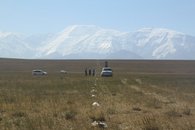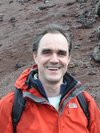Applied seismics
We use applied seismic methods to explore structures in the Earth's interior and map dynamic processes. Elastic waves that emanate from natural sources or propagate in the earth as ambient noise are observed and the velocity structure in the subsurface is inferred. To map near-surface processes as well as to characterize geodynamic structures, we work on the scale range from a few meters to several hundred km.
In addition to the application of established methods (reflection and refraction seismics, tomography), we are concerned with further development of imaging methods (migration and tomographic inversion of seismic data with active sources, inversion of long-term seismic recordings of ambient noise).
Our methods:
- Acquisition (seismic sources, data recording)
- Reflection seismic imaging (conventional and CRS processing; exploitation of diffraction; prestack migration)
- Refraction seismics and tomography (linearized methods; Bayesian inversion; inversion of travel times, dispersion curves, waveforms; velocities, absorption, anisotropy)
- Machine learning (multi-parameter interpretation, self-organizing maps, deep learning)
Topics and geoscientific questions:
- Geodynamics (mountain building, subduction zones, passive continental margins, volcanism, formation of large fault zones)
- Applied geophysics (use of sedimentary storage rocks, exploration for geothermal energy, mineral raw materials and nuclear waste)
- Climate and surface processes (studies in submarine permafrost, mapping of the weathering zone)





